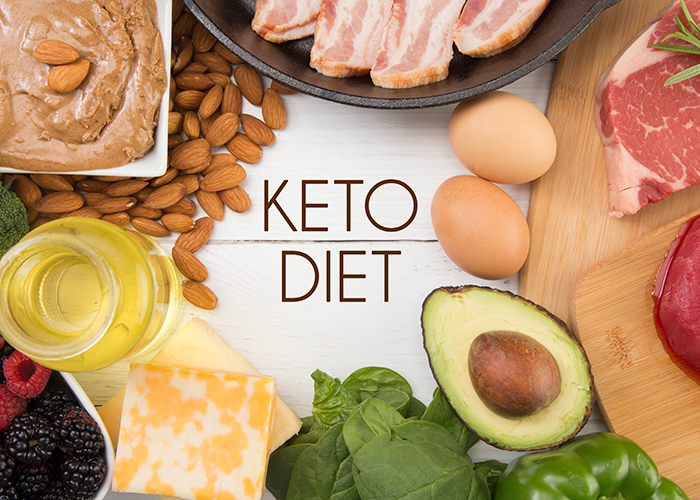Articles

Keto Diet
The Ketogenic Diet (Keto Diet)
The ketogenic diet is a combination of the Atkins diet and a low-carb diet, as it consists of very low carbohydrate and high-fat foods. Some studies have shown that this diet may be beneficial in certain cases. The principle behind this diet is that when a person consumes less than 50 grams of carbohydrates per day, the body enters a state called ketosis.
What is Ketosis?
Ketosis is a metabolic state in which the body produces ketone bodies from fat and uses them as a source of energy instead of carbohydrates due to the lack of sufficient glucose.
A small amount of ketones may appear in the urine, which indicates that the body is using fat for energy. However, if ketone levels rise significantly, this may indicate ketoacidosis — a dangerous increase in blood acidity that requires medical attention.
Types of Ketogenic Diets
- Standard Ketogenic Diet (SKD):
- Very low in carbs, moderate in protein.
- Typically: 75% fat, 20% protein, 5% carbs.
- Most commonly used type.
Cyclical Ketogenic Diet (CKD):
- Involves alternating between keto days and high-carb days.
- Example: 5 days of keto, 2 days of high-carb eating.
-
Targeted Ketogenic Diet (TKD):
-
Allows adding carbs around workout times.
-
-
High-Protein Ketogenic Diet:
-
Similar to the standard keto but with more protein.
-
Typically: 60% fat, 35% protein, 5% carbs.
-
Who Should Avoid the Keto Diet
-
Individuals with gallbladder issues or those who had it removed
-
People who are underweight
-
Pregnant or breastfeeding women
-
Children under 18
-
Individuals who underwent bariatric surgery
-
People with pancreatic enzyme deficiencies
-
Individuals aiming to gain muscle mass
Potential Uses of the Keto Diet
-
Epilepsy:
Some studies suggest that replacing glucose with ketone bodies may reduce seizure frequency. Ketosis may enhance the production of GABA (an inhibitory neurotransmitter). -
Weight Loss:
-
Increases fat burning
-
Eliminating certain foods reduces calorie intake
-
Helps suppress appetite
-
Maintains muscle mass due to moderate/high protein intake
-
-
Diabetes:
May improve insulin sensitivity due to the loss of excess fat in cells -
May Help with Other Conditions (More Research Needed):
-
Alzheimer’s disease
-
Acne
-
Polycystic Ovary Syndrome (PCOS)
-
High blood pressure
-
Common Side Effects
In the first few days of starting the diet, the body may need to adjust, leading to temporary side effects such as:
-
Fatigue
-
Hunger
-
Poor concentration
-
Sleep disturbances
-
Nausea
-
Digestive discomfort
-
Decreased exercise performance
The diet may also affect levels of certain vitamins and minerals:
-
B Vitamins
-
Sodium
-
Potassium
-
Magnesium
Foods to Avoid on Keto
-
Sugary foods (soda, ice cream, juices)
-
Legumes (beans, lentils, chickpeas)
-
Most fruits
-
Sugar-free/diet foods with sugar alcohols
-
Starches (rice, pasta, wheat-based products)
-
Root vegetables and tubers (potatoes, carrots, beets)
-
Low-fat foods
-
Unhealthy fats and hydrogenated oils (processed vegetable oils, mayonnaise)
Recommended Foods on Keto
-
Eggs
-
Cheese
-
Meat and poultry
-
Fish
-
Healthy oils (olive oil, coconut oil, avocado oil)
-
Unsalted nuts
-
Avocado
-
Butter and cream
-
Low-carb vegetables (tomato, onion, bell pepper)
Tips and Additions to Support the Diet
-
Drink plenty of water
-
Add MCT oil (Medium Chain Triglycerides) to increase fat intake
-
Consider taking supplements to prevent deficiencies in vitamins and minerals
-
Caffeine may help reduce fatigue
References:
